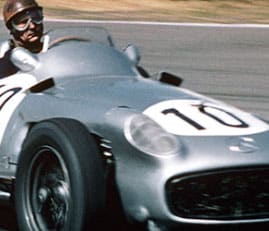Kyalami, March 4th
At one time the South African Grand Prix was a very happy affair and almost “olde tyme” in its make-up, untroubled by any of the pressures and disease brought on by progress. It was completely self-supporting in that the money paid by the spectators covered the cost of organising the event, with some left over for the club kitty. The increase in the size of the Formula One “circus” and the rise in transport costs have grown out of all proportion so that over the past four years income from the spectators could no longer balance the cost of a World Championship Grand Prix and outside financial help had to be sought. This meant that the South African Motor Racing Club were no longer their own masters as far as the Grand Prix was concerned and this year the search for financial benefactors to bridge the widening gap between income and expenditure caused alarm until a few weeks before the event. The South African newspaper The Citizen and Associated Engineering Ltd. eventually came to the rescue with enough money to add to the expected gatemoney, to pay the bill for twenty-one Formula One teams, some with three cars and an army of personnel, others with one car and a handful of people, to make the journey to South Africa. Because of this undecided state of affairs until the last moment, certain work needed on the circuit to comply with FIA Safety Standards, was not put in hand until late in the day. There was little point in spending money on armco barriers, catch fences and run-off areas for wayward Formula One cars if there was not going to be a race; for National Formula Atlantic or Saloon Car racing the circuit was adequate. Added to this the Formula One “circus” was using the Kyalami circuit for testing new cars, new tyres, new aerodynamics and so on, and for this work safety standards are overlooked, for such activity is in the nature of private work and the public are not supposed to be there, so the FIA has no responsibility, but once official practice begins it is their responsibility to see that the paying customers are protected from any danger from the competing cars.
Practice was due to start at 10 a.m. on Wednesday March 1st and before it could start the organisers had to have an official document signed by the representatives frail the FIA to say all was in order. The “men from the ministry” were Curt Schild from Switzerland and Robert Langford from Britain, on behalf of the Constructors. The necessary work was not completed by Wednesday morning, so the document was not signed and practice could not begin. All the drivers and constructors were ready to go, but without Schild’s signature of approval it was not possible. The noisy little man from the Formula One Constructors was all for packing up and going home, but he was told very firmly that practice would begin at 2.30 p.m., by which time the necessary work could be completed. It was actually reckoned that it would be finished by 1.30 p.m. but it was deemed sensible to allow an hour’s margin. The normal arrangement on fast practice day is to have 1 1/2 hours in the morning and one hour in the afternoon, but this was scrubbed and it was agreed to have 1 1/2 hours in the afternoon.





